For better or worse, computers have become an integral part of our daily lives, and imagining life without them almost seems unthinkable. So much of the world now depends on machines that it’s difficult to imagine thousands and thousands of different job types that don’t use a computer.
The ironic part is that as much as this is true about how dependent the world has become on computers, in the grand scheme, computers are relatively young and didn’t become prominent additions to homes and offices until the last 30-40 years. This is why looking at this history of computers is so fascinating as you can see how the computers you know today that can fit in a small bag pale in comparison size-wise to computers from just 70 years ago that were large enough to require their own warehouses.
With this in mind, let’s dive into history and discover the 10 oldest computers the world has ever known.
#1: Antikythera Mechanism
Widely regarded by history scholars as the oldest computer in history, the Antikythera Mechanism is far older than you might imagine. In fact, this computer is so old that it’s believed to have been invented somewhere around 205 to 87 BC.
Discovered off the coast of Greece in 1901 by Valerious Stais, its discovery was initially puzzling as it appeared to be a machine thousands of years old but scholars didn’t know what they had found at first.
Believed to be constructed by Hellenistic scientists, it was found as part of a shipwreck that probably sank around 70–60 BC, which means it was constructed before it was added to the ship prior to sailing.
As for what the Antikythera Mechanism actually does, it’s thought to be an analog computer complete with as many as 37 different wheels. By using these wheels, scholars who have extensively studied the complete findings from Greece hypothesize that it was used to make astronomical predictions or locate the positions of the Sun, Moon, and other planets.
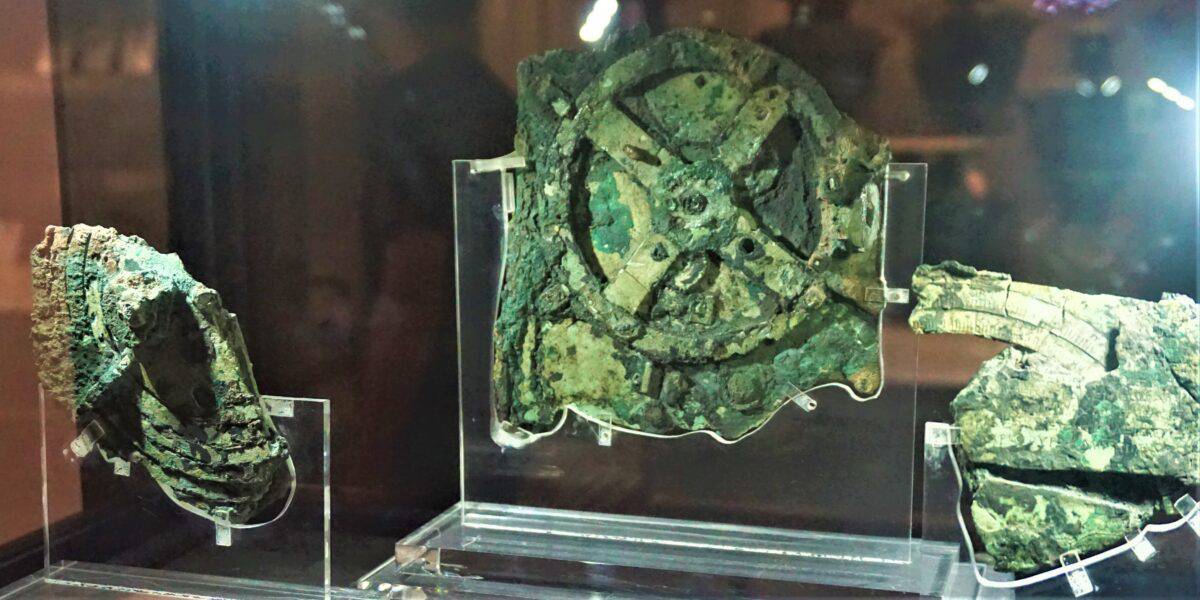
©Joyofmuseums / Creative Commons Attribution-Share Alike 4.0 International license – Original / License
#2: Z1
Designed by German civil engineer Konrad Zuse between 1936 and 1937, the Z1 computer is recognized as the second-oldest computer in history. Essentially a binary electric-driven mechanical calculator, the Z1 is considered the first machine to use boolean logic, which is a common computer language in use today.
One of the most interesting aspects of the Z1 is that it was put together using only private funds as no company in Germany or from elsewhere had a hand in its design. Also interesting is how advanced the thinking was since it included a punched tape reader and input tape, and could even handle a small subset of complex operations when using its eight different instructions in order. Each instruction would take between 1 to 21 different cycles in order to produce a result on the machine.
Unfortunately, the Z1 computer was destroyed during the Allied bombardment of Berlin in 1943 at the height of World War 2. During the same bombardments, the instructions were lost as well, which meant the Z1 could never be properly replicated.
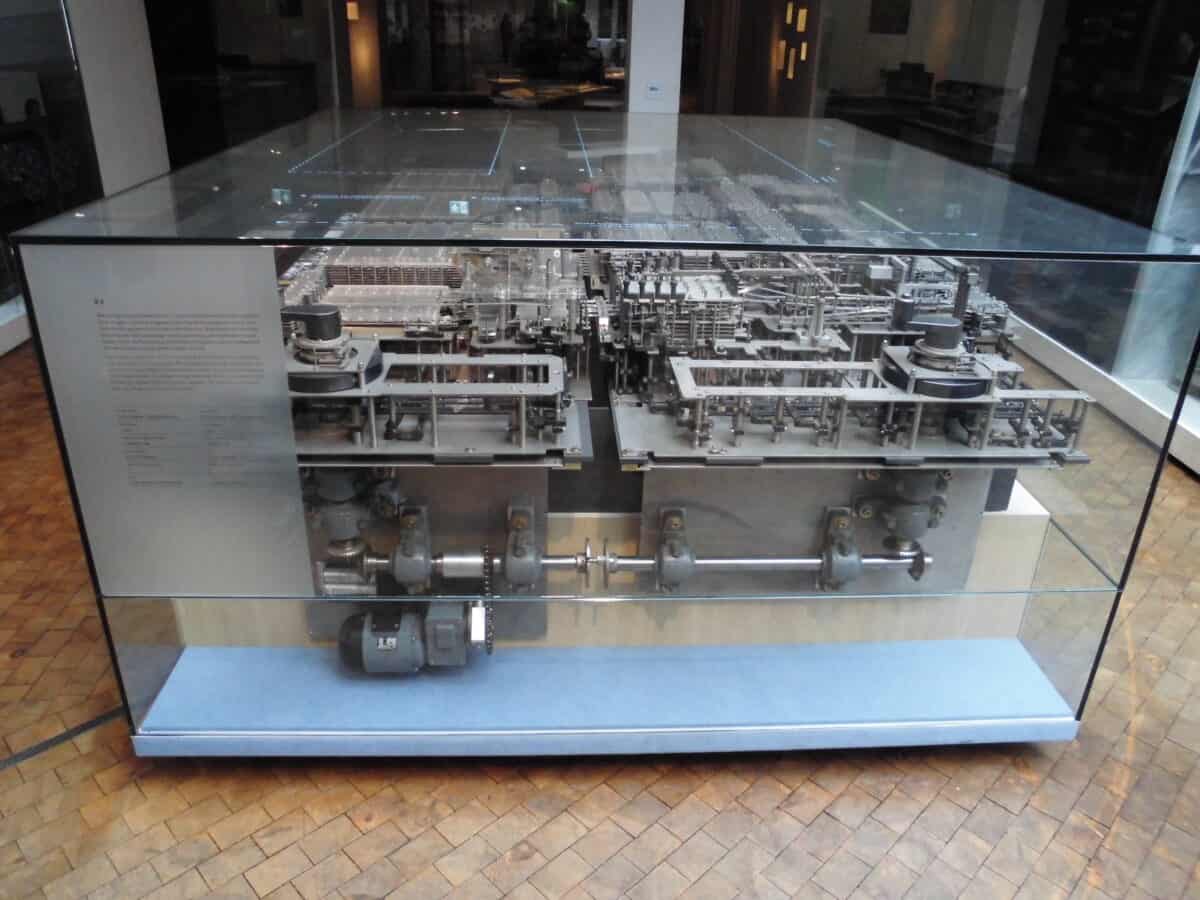
©Morn / Creative Commons Attribution-Share Alike 3.0 Unported license – Original / License
#3: Atanasoff-Berry Computer (ABC)
The first-known computer to properly store information inside a memory component, the Atanasoff-Berry Computer can trace its origins back to 1937 with a release in 1942. Designed by Iowa State professor John Vincent Atanasoff and student Clifford Berry, the ABC is regarded as being the first electronic digital computer.
While the Atanasoff-Berry Computer is a hotly debated topic among computer historians because it was not programmable, what cannot be disputed is the clever use of vacuum tubes to perform arithmetic calculations. The computer itself was designed with the intention of assisting both Atanasoff and Berry to solve complex linear equations with its first successful test arriving in 1942.
Unfortunately, the computer wasn’t truly discovered until the 1960s, long after work on the computer had stopped due to Atanasoff leaving Iowa State due to WW2 efforts. Eventually, a court case in 1973 would help properly designate the ABC computer as one of the first modern computers.
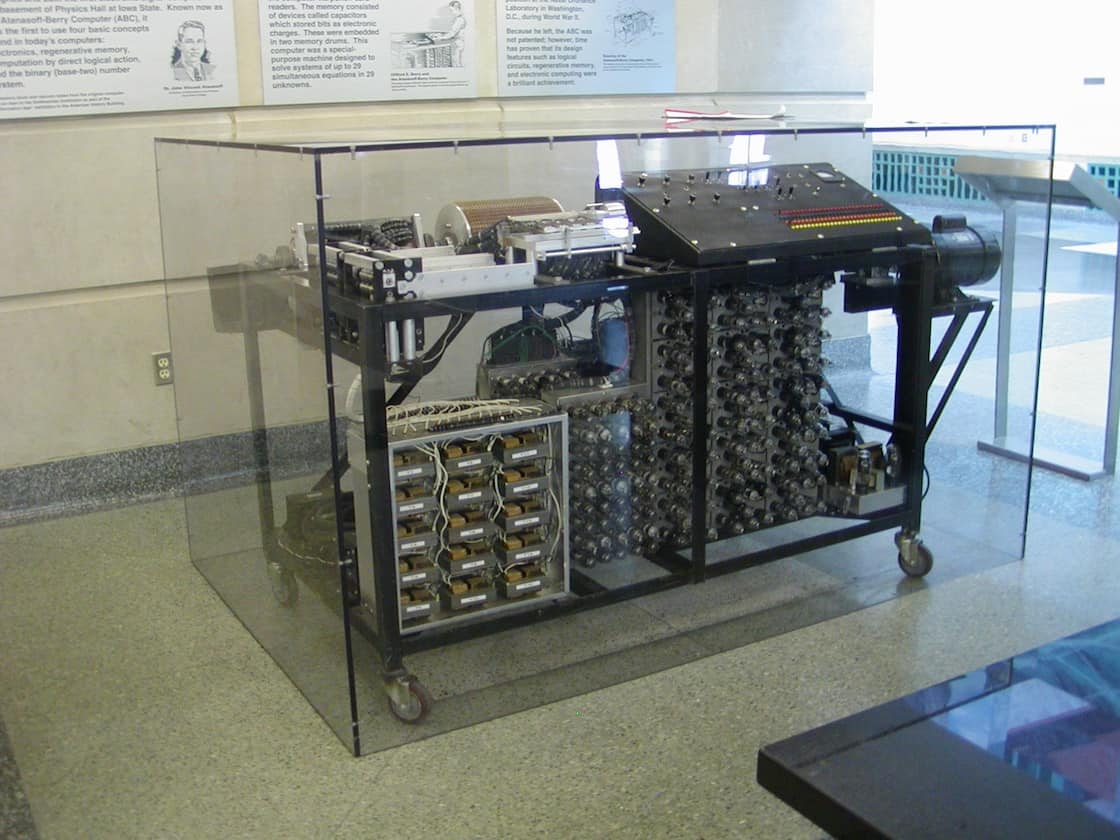
©Manop / Creative Commons Attribution-Share Alike 3.0 Unported license – Original / License
#4: Colossus Mark 1
Developed by British codebreakers between 1943 and 1945, the Colossus computer series, specifically the prototype Colossus Mark 1, played a pivotal role in WW2.
Designed by the General Post Office in the United Kingdom and telephone engineer Tommy Flowers, the Colossus computer series was put to work just before D-Day and the Normandy landing of Allied troops in 1944.
Around 10 total Colossus computers were put into service with the purpose of intercepting German radio messages. These machines used upwards of 2,500 vacuum tubes and had a series of pulleys that would push through all of the paper tape, which would be potential code-breaking solutions.
Ultimately, the use of the Colossus machines is believed to have shortened the total war effort by great margins. This is true even after learning that the public did not know of the existence of these machines until the middle of the 1970s, almost 30 years after the war ended.
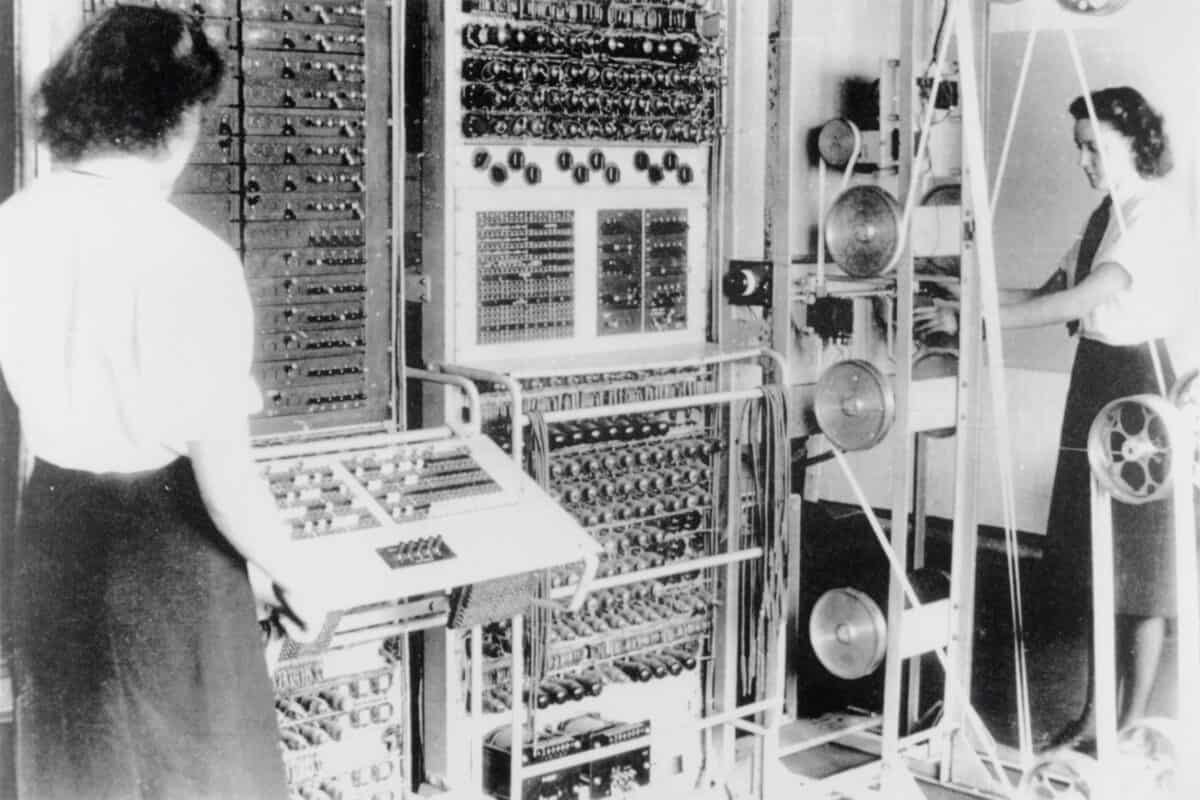
The Colossus Mark 1 was a British computer that helped break some of the Axis codes and win World War 2.
©Unknown Author / Public Domain – Original / License
#5: Harvard Mark 1
Yet another WW2-based computer, the Harvard Mark 1, or the Automatic Sequence Controlled Calculator, was another early entry into the general-purpose computer space developed by Howard Aiken. One of the most fascinating aspects of Mark 1 is that it was used by John von Neumann as part of the Manhattan Project to compute certain aspects of the way to test the detonation of the atomic bomb.
In addition, the Harvard Mark 1 was also used to help develop radar and underwater detection of torpedoes. The Mark 1 is notable for the role it played in helping the Allies win the Second World War.
Upon its development in 1937, Howard Aiken presented the design to IBM (yes, that IBM), and after being built it was shipped to Harvard in 1944. It was officially put into service by the U.S. Navy Bureau of Ships in May 1944. Notably, the Harvard Mark 1 was able to perform 3 addition or subtraction equations every second, while multiplication took 6 seconds, and division took 15.3 seconds.
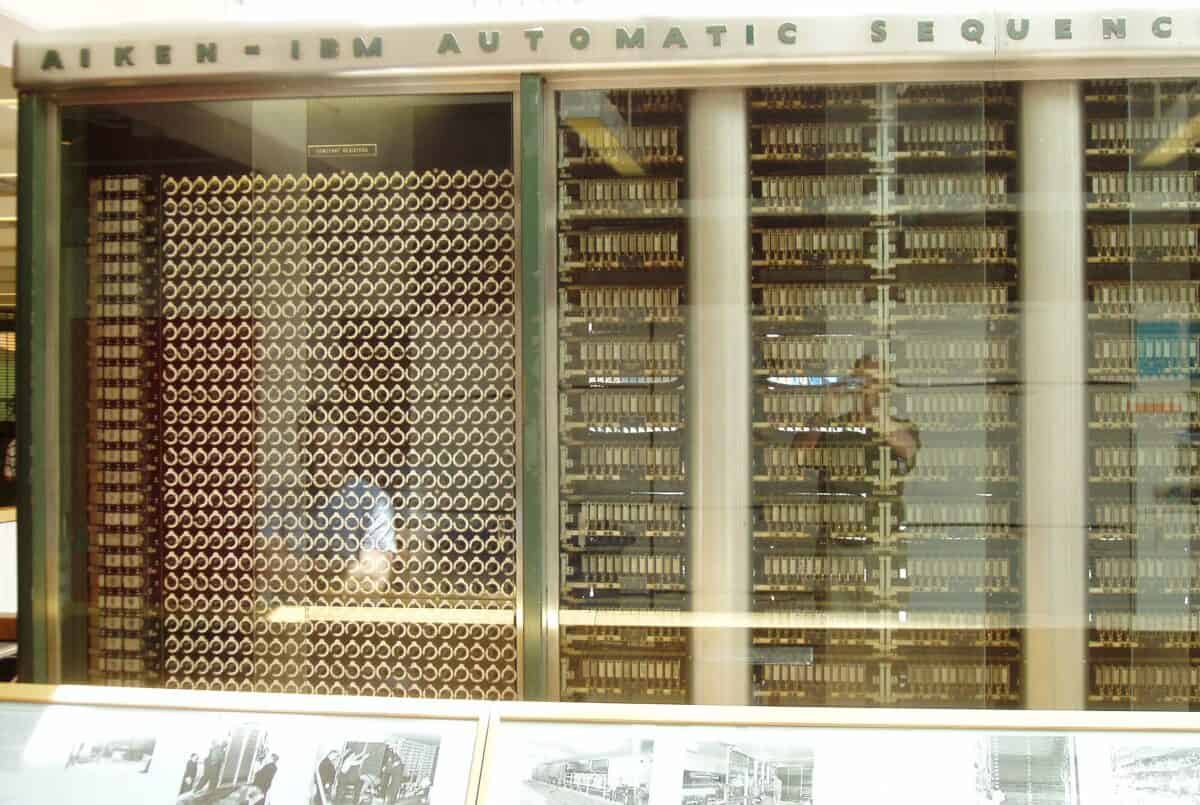
©Daderot / Creative Commons Attribution-Share Alike 3.0 Unported license – Original / License
#6: ENIAC 1
Completed in 1945, the ENIAC 1 will go down in history as the first programmable and general-purpose computer upon its release. Designed by John Mauchly and J. Presper Eckert who worked for the United States Army’s Ballistic Research Laboratory, the computer was actually ordered and financed by the U.S. Army under the command of Major General Gladeon M. Barnes.
Costing around $487,000 — or around $8.1 million in 2023 — work on the ENIAC 1 began years before at the University of Pennsylvania. As a modular computer, the ENIAC 1 was composed of a multitude of parts that all had different functions. Among those functions are 20 different modules that could both add and subtract and hold a ten digital decimal in its memory indefinitely.
As advanced as the computer was for its day, it was not without its share of problems. The vacuum tubes that supported its use would burn out almost every day and would cause the ENIAC 1 to only work around half the time. In 1954, the ENIAC 1 would operate for its longest period without issue, a total of 116 hours.
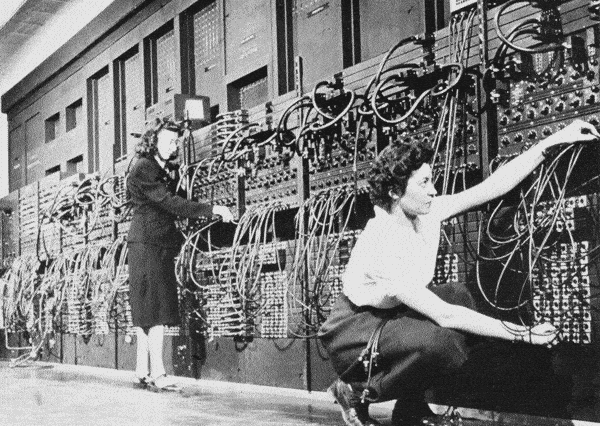
©National Archives. ID: 594262 / Public Domain – Original / License
#7: Manchester Mark 1
Beginning construction in 1948 and completed in 1949, the Manchester Mark 1 was built by Frederic C. Williams and Tom Kilburn who worked at the University of Manchester in England. Another computer to be considered as one of the first stored-program machines, the Manchester Mark 1 was widely reported in the British press.
The idea behind the Manchester Mark 1 was to provide the university with the opportunity to use computers in a practical way. However, the Manchester Mark 1 would have a quick shelf life as it was scrapped in 1951 when it was replaced by the Ferranti Mark 1.
Even with its short lifespan, the Manchester Mark 1 is still worth celebrating thanks to its inclusion of index registers, which made it easier to read through a sequential path of words that were stored in the computer’s memory. Ultimately, the Manchester Mark 1 would be responsible for over 34 different patents and a lot of its contributions would later be incorporated into some of IBM’s most prominent developments of the time, like the IBM 701 and IBM 702.
#8: Automatic Computing Engine (ACE)
Another British development around the same period as the Manchester Mark 1, the Automatic Computing Engine, or ACE for short, would become operational in 1950. Developed as part of a project spearheaded by John R. Womersley, the ACE would become notable as the third stored computer at that time in England.
The ACE would also have the honor, at least for a short while, of being the fastest computer running at a speed of 1 MHz. At that time, this was a remarkable achievement in computing performance.
While the ACE performed well, it was more a function of hope as to what computers would be able to do in the future. Famous developer Alan Turing would play a significant role in the ACE’s development beginning in 1945 and was part of the driving force to help the ACE achieve its 1 MHz performance speed.
During the early years of the Cold War, the ACE would play a role in assisting British air defenses and were on the lookout for any Russian troop movement.
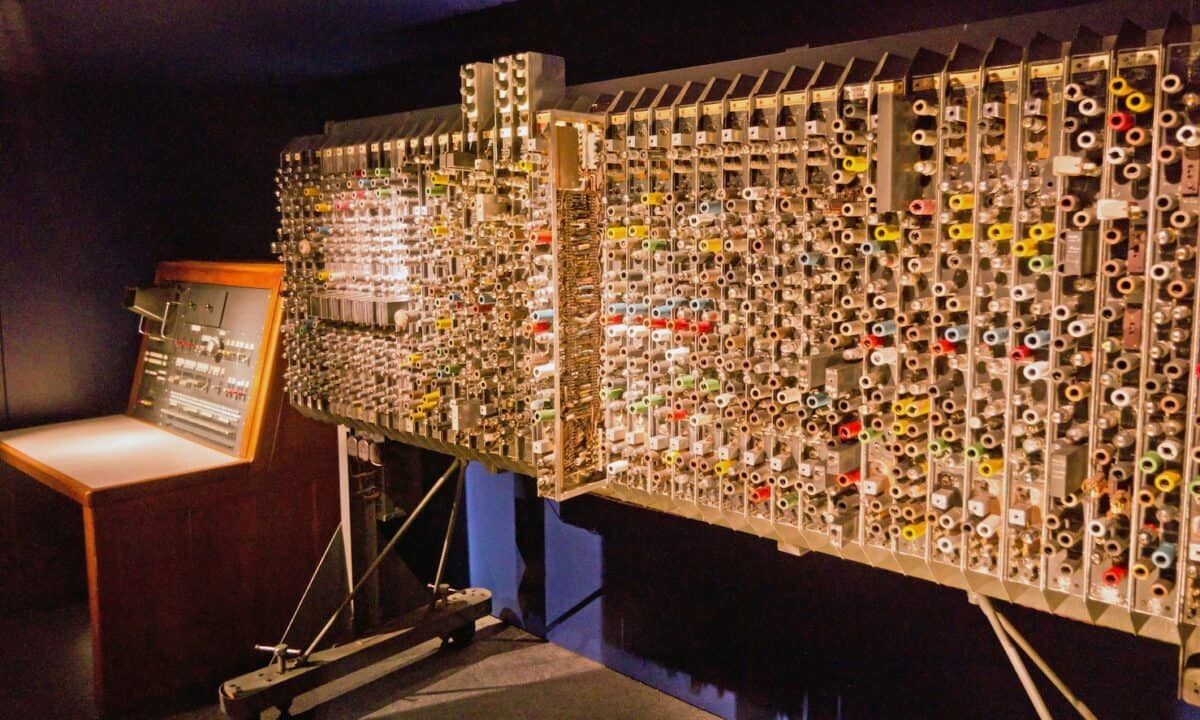
©Antoine Taveneaux / – Original / License
#9: Universal Automatic Computer (UNIVAC 1)
Manufactured by the Eckert-Mauchly Computer Corporation, the UNIVAC 1 would be released to the world in March 1951. Coincidentally, the computer was designed by J. Presper Eckert and John Mauchly who left the University of Pennsylvania after a patent dispute regarding the development of the ENIAC 1.
As the first-generation computer to be designed and sold in the United States, the UNIVAC 1 was famously utilized by the United States Census Bureau on March 31, 1951. Another model of the UNIVAC 1 was utilized by the CBS television network to help predict the result of the 1952 Presidential election, where it accurately predicted President Eisenhower’s victory.
Designed with business use in mind, the UNIVAC 1 would see a variety of different models sold between 1951 and 1954. In total, over 46 systems were produced and sold and while some universities wanted to test the computer’s function, the EMCC company would not give them away, even for educational purposes. At a price of $1,500,000, the UNIVAC 1 would be right around $17.3 million dollars in 2023.
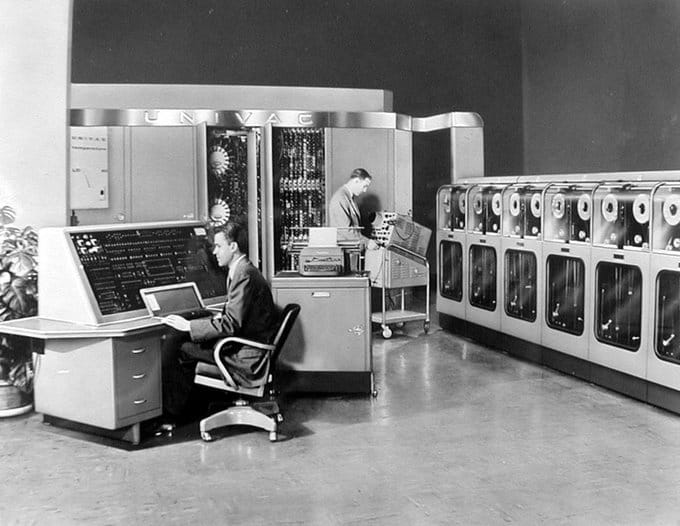
The UNIVAC 1 is one of the oldest computers in the United States and helped predict the 1952 Presidential election.
©U.S. Census Bureau employees / Public Domain – Original / License
#10: Ferranti Mark 1
The world’s first commercially available general-purpose computer, the Ferranti Mark 1, would be one of the first machines that was not part of any specific war effort as it was released in 1953. In fact, the Ferranti Mark 1 famously played chess, which makes it one of the first computers ever to play a PC game.
Developed by British company Ferranti LTD., it is often considered to be a commercialized version of the Manchester Mark 1 as the two computers share a lot of similarities.
Any instructions provided to the Ferranti Mark 1 would be stored as a single word, while numbers were stored as two words. Holding this data were eight different memory tubes each of which could store 64 words in total. Secondary storage was accessible via a magnetic drum that offered around 30 milliseconds of revolution time in which to store memory.
Once provided instruction, a multiplication question could be completed in around 2.16 milliseconds, which is around 5 times faster than the Manchester Mark 1. Similar math questions were Ferranti Mark 1’s specialty, which made it ideal as a computer available for commercial purposes.
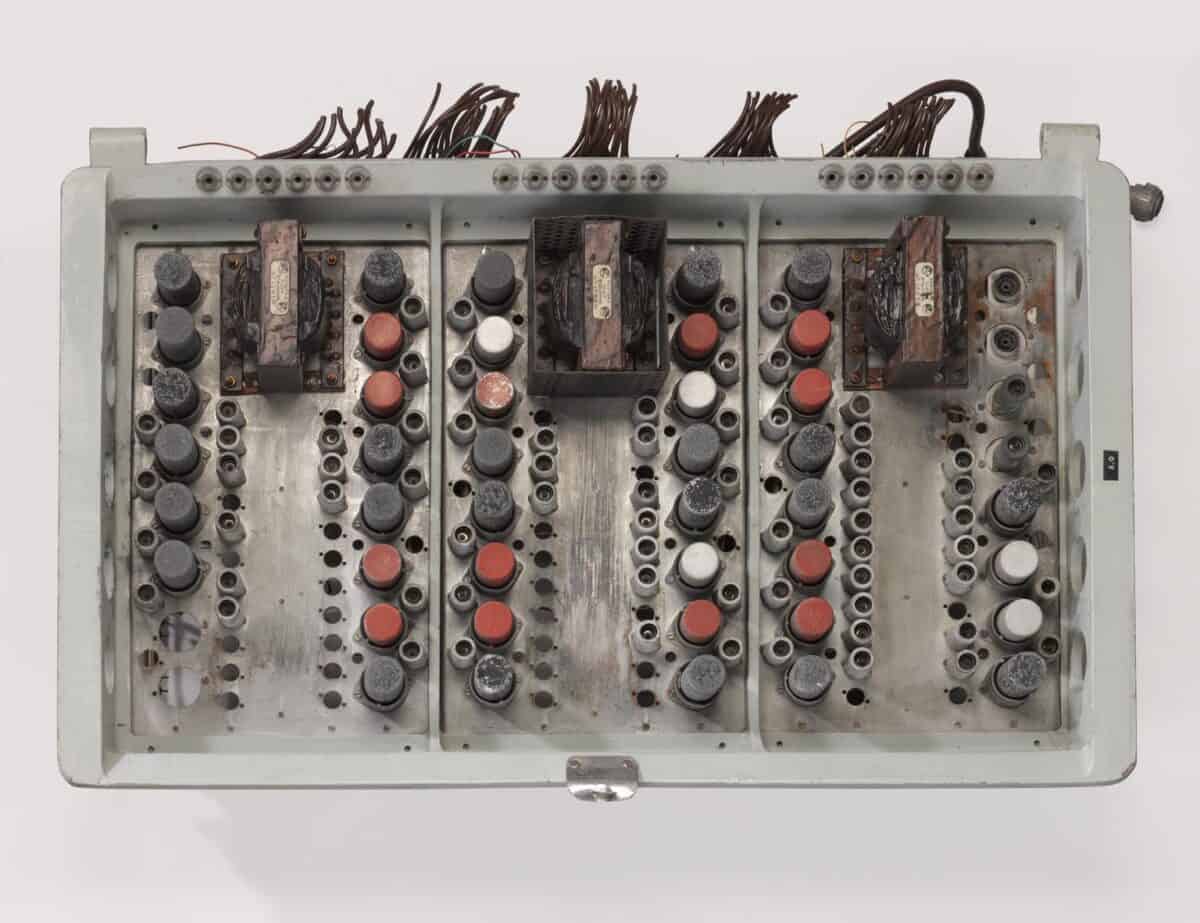
©Ferranti Limited / Creative Commons Attribution-Share Alike 4.0 International license – Original / License
The 10 Oldest Computers in the World: Summary
| Rank | Name | Year Released |
|---|---|---|
| #1 | Antikythera Mechanism | 205 – 87 BC |
| #2 | Z1 | 1937 |
| #3 | Atanasoff-Berry Computer | 1942 |
| #4 | Colossus Mark 1 | 1943 |
| #5 | Harvard Mark 1 | 1944 |
| #6 | ENIAC 1 | 1945 |
| #7 | Manchester Mark 1 | 1949 |
| #8 | Automatic Computing Engine | 1950 |
| #9 | Universal Automatic Computer | 1951 |
| #10 | Ferranti Mark 1 | 1953 |
Wrapping Up
As hard as it is today to imagine a world where computers are not present in billions of homes, it wasn’t too long ago this was a reality.
Today, computers are as important as ever as they connect us to the world in many different ways. Everything from email and the internet to word processing are all things taken for granted, but they remain relatively new inventions thanks to the incredible work that went into the 10 oldest computers in history that are on this list.
As one of the most integral pieces of technology the world knows today, it’s going to be interesting to see how differently computers look 75 years from now!